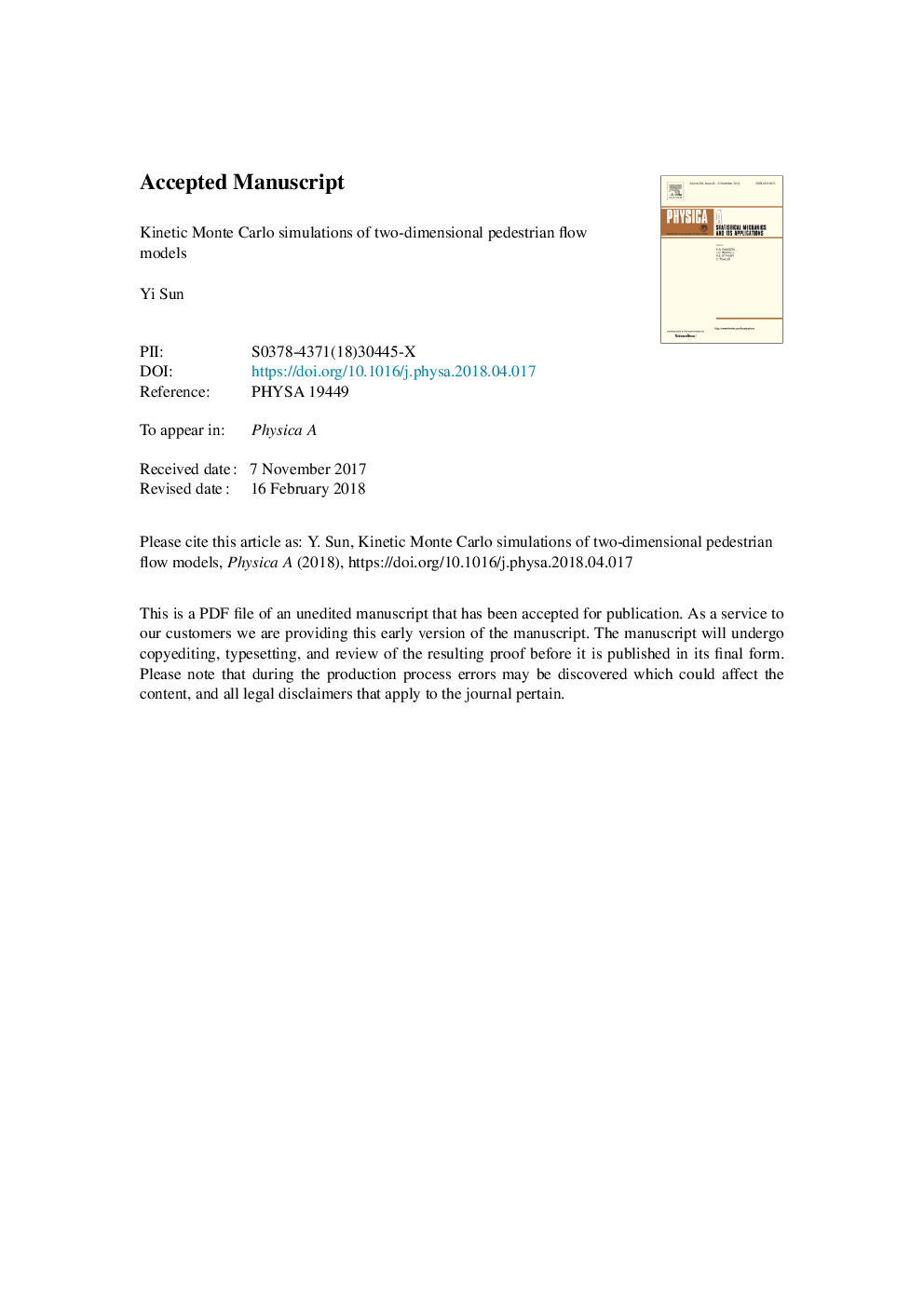| Article ID | Journal | Published Year | Pages | File Type |
|---|---|---|---|---|
| 7375418 | Physica A: Statistical Mechanics and its Applications | 2018 | 22 Pages |
Abstract
We employ an efficient list-based kinetic Monte Carlo (KMC) method to study two-way and four-way pedestrian flow models on two-dimensional (2D) lattices based on the exclusion principle and Arrhenius microscopic dynamics. This model implements stochastic rules for pedestrians' movements based on the configuration of the surrounding conditions of each pedestrian. Although the decision-making process of pedestrians is more complex and adaptive to dynamic conditions than vehicular flows, our rules can reflect the pedestrians' decisions of action such as moving forward, stopping to wait, lane switching, back stepping, etc. The simulation results of both two-way and four-way flows exhibit a state transition from freely flowing to fully jammed, as a function of initial density of pedestrians. At different states the relationships of density-flow and density-velocity are different from each other. The KMC simulations reported in this paper are compared with those from other well-known pedestrian flow models and the corresponding empirical results from real traffic.
Related Topics
Physical Sciences and Engineering
Mathematics
Mathematical Physics
Authors
Yi Sun,
